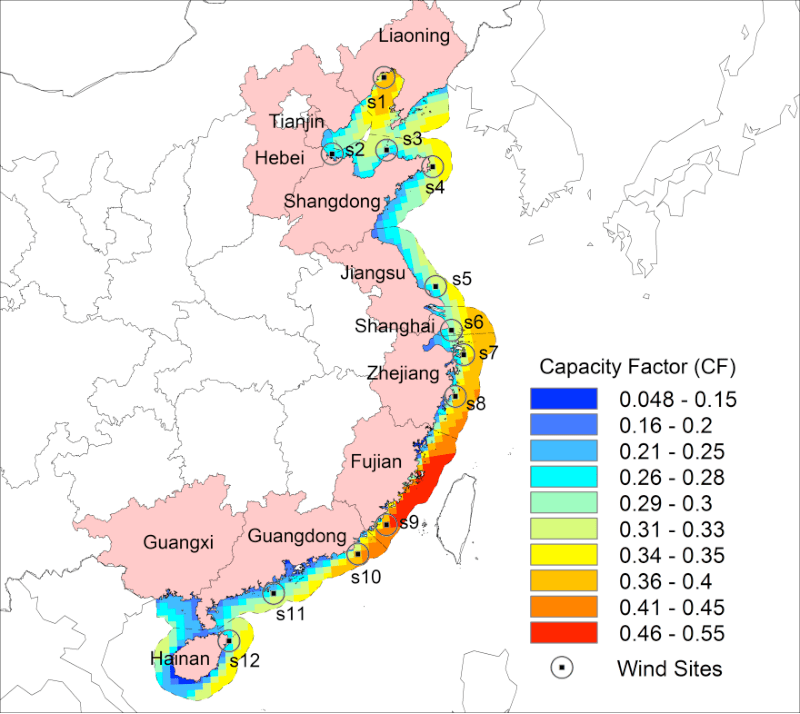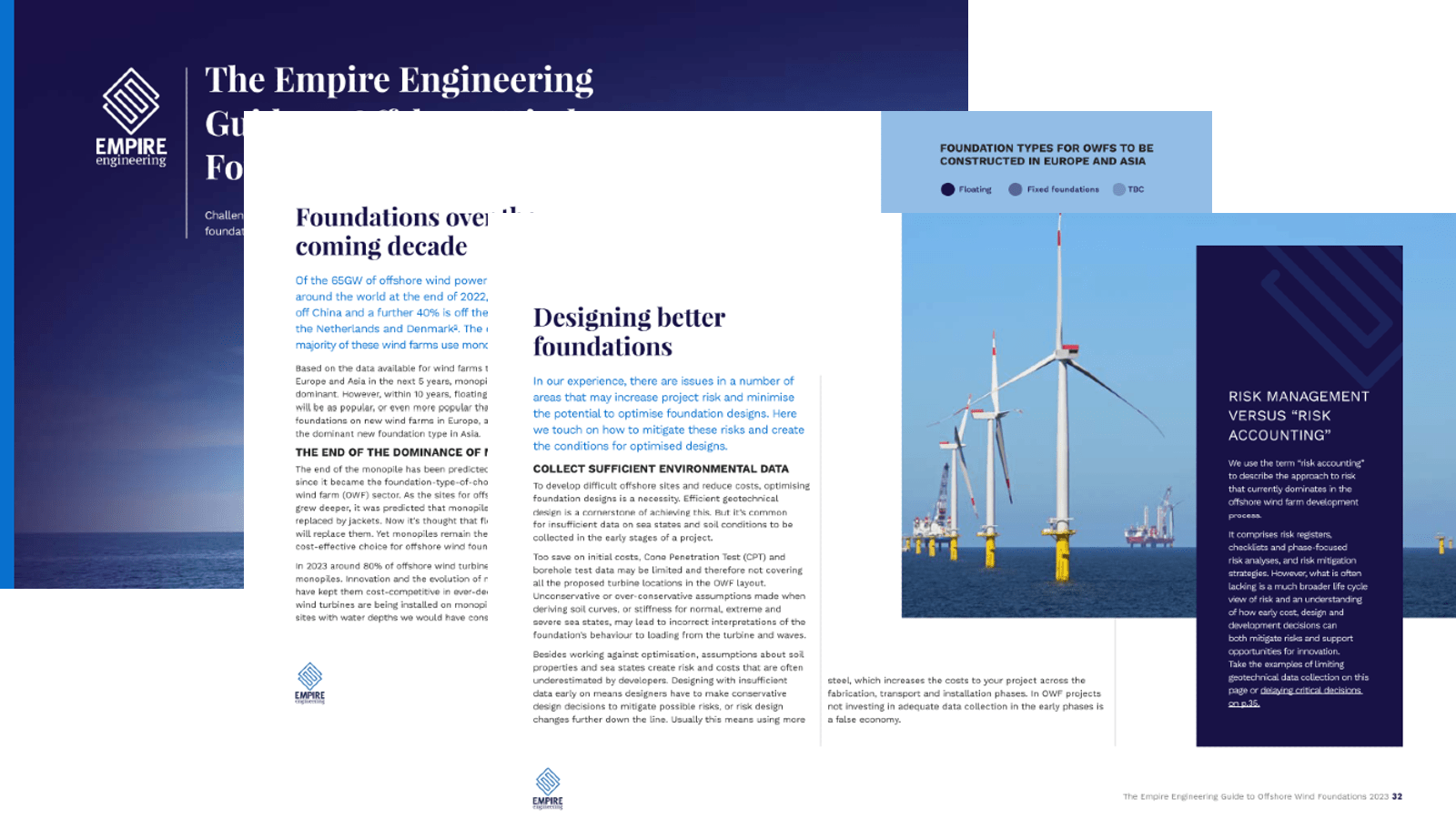By Aaron Du.
Empire Engineering has been working closely with Chinese offshore wind developers, EPC contractors and suppliers on a number of offshore wind projects in recent years. Based on our understanding of the Chinese offshore wind market, we would like to share with you our thoughts on the development of Offshore wind in China.
This article is divided into three parts: status-quo, challenges and prospects.
Status-quo
According to the latest data from the Global Wind Energy Council, China led the world in new offshore wind power capacity for three consecutive years. By November 2021, China’s total grid-connected capacity of offshore wind in eight coastal provinces exceeded 13GW, surpassing the UK and becoming the largest offshore wind market in the world.
China has formed a mature supply chain system of offshore wind with annual installed capacity of 5-6GW. Some leading provinces such as Jiangsu, Fujian, and Guangdong, have developed regional industrial supply chains for offshore wind.

Figure 1, Offshore wind capacity factor (CF) of China eight coastal provinces (source: EVWIND)
Offshore wind technology and innovation have developed rapidly in China. Mass production of 10MW sized offshore wind turbines began in 2021; China’s first floating offshore wind turbine was successfully installed in Yangjiang in 2021, with a single capacity of 5.5 MW and a maximum resistance to typhoon 220km/hour; A 6MW floating wind turbine will be installed and operated in the sea area of Qingdao, providing experience for floating offshore wind turbines to enter the deep sea; China’s first intelligent offshore wind farm was connected to the grid in Jiangsu Province. The LCOE of offshore wind in China has been gradually reduced because of the increased wind turbine size, optimised design, and economies of scale.
The China government has established a policy system for offshore wind. Although the current policy system is not perfect, the planning of offshore wind projects have developed at both national and province levels, which provides a sound basis for large-scale development.
Challenges
Influenced by the policy of no national subsidies from 2022, many offshore wind projects were constructed in 2020 and 2021 and faced various challenges, such as the tight project schedule, shortage of construction vessel supply, and the impact of COVID-19.
From 2022, without national subsidies, it is difficult for developers or investors to establish a robust business case based on the current CAPEX and OPEX estimations. Various measures need to be taken in the new era with no subsidy, such as collaborative projects, technological innovations, coupled with the cost reductions across the supply chain. A lot can be learned from the sharp reduction in LCOE achieved in Europe over the past 5-10 years.
Although the environmental consenting process in China is less rigorous than those in Europe, the Chinese government is increasing its focus on the environmental impacts of offshore wind farms. The State Oceanic Administration has issued the Coastline Protection and Utilisation Management Guidance, strictly limiting the occupation of ecological restricted areas for offshore wind projects. In addition, as the fishing, industrial and military areas are complicated in the sea, for offshore wind farm planning, it is necessary to establish an integrated site planning mechanism, coordinating with territorial space planning.
By the end of 2021, the total approved offshore wind projects to be built is 22GW. The shallow water offshore seabed resources are competitive and limited. The deep sea water areas, and floating wind developments are the trends for the future development, which requires accelerated technology innovation for large turbines and the design and optimisation of turbine support structures.
Talk with a specialist
We've been a part of some of the worlds most exciting and
complicated projects in offshore wind.
If you need more eyes, brains and hands, we're ready to help.
Prospects
In the global offshore wind market, the development goals are ambitious in Europe, Asia and America. The development trends include large scale individual projects, accelerated innovation of large wind turbines, deep water bottom fixed foundations, and innovative floating wind structures.
The International Energy Agency forecasts that by 2040 China will have as much offshore wind capacity as the European Union, i.e. greater than 100GW.
The development of offshore wind power in China is of great significance under the context of the government’s major strategy “Carbon Peak, Net Zero”. To vigorously develop offshore wind power is an important strategic part for coping with global climate change and promoting the transformation of energy infrastructure. It is also an important driving force for the development of renewable energy, marine economy and regional economy for coastal provinces.
Looking to the future, from the development perspective, an important step is to improve the government policy. The central government provides policy guidance and local governments directly support the development of offshore wind. But continuous policy research and innovation are required at both local and national levels.
For the offshore areas with water depth less than 50m where majority of offshore wind farms will be built in the next five years, the focuses will be optimising the project layout, promoting integrated development projects, and achieving cost reductions by scale effects, optimised resource allocation and policy innovation; for the deep water areas, the floating wind development has great potential and unlimited opportunities assuming the limitations of cost can be overcome.
From the technology perspective, technology innovation in the whole supply chain to reduce the cost is the key. Offshore wind power is a technology-intensive industry. It is suggested to focus on the following aspects to promote the collaborative innovation and development of technology in the industrial chain:
- Promoting R&D of the large size offshore wind turbine and localising the production of key components
- Developing flexible Direct Current (DC) technology
- Accelerating innovative and optimised design solutions for deep water and large turbine support structures, including both bottom fixed and floating foundations;
- Making offshore wind power intelligent, digital and precise, and improving the efficiency and cost reduction of O&M.
Finally, integrated development projects would be a trend. For example, the integrated development of offshore wind farm and fish farms may improve the efficiency of using sea areas, create additional benefits and achieve overall cost reduction; offshore wind also has the potentially to evolve into the power source to generate low-cost green hydrogen using seawater at scale.
To find out more, please get in touch with Aaron Du who heads up the Empire London office.


